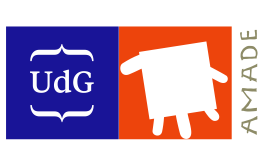
08 Nov New paper on nominal strength of notched pseudo-ductile specimens
Researchers of AMADE – Universitat de Girona (A. Subramani, P. Maimí, J.M. Guerrero, J. Costa) have recently published the paper entitled “Nominal strength of notched pseudo-ductile specimens” in the journal Theoretical and Applied Fracture Mechanics (Volume 128, December 2023, 104120).
The paper is available for 50 days without subscription at: https://authors.elsevier.com/c/1hxa3_3qFjXshV
This work is part of the PhD thesis of Anbazhagan Subramani under the supervision of Pere Maimi and Josep Costa
Regarding the context of this research, quasi-brittle materials like composites are notch-sensitive, and the stress concentration factor (Kt) determines their strength knock-down. To alleviate this notch sensitivity, researchers are pursuing pseudo-ductility to stimulate stress redistribution around the notches. However, how such a pseudo-ductile material reduces Kt or improves the nominal strength (ᲜN) in notched sub-components (centre crack, elliptical hole and open hole) is unclear. In this work, we analytically determine the Kt of typical notched specimens made of an idealised pseudo-ductile material and show its accuracy using Finite Element (FE) models. Kt increases after the specimen transitions from localised yielding to net-section yielding. Then, we elucidate the size-effect behaviour of the notched sub-components using FE models. The study reveals that the notched pseudo-ductile specimens recover higher ᲜN than their linear elastic counterparts, in proportion to the Kt. However, pseudo-ductility decreases the ᲜN for smaller specimens, and the notch shape is unimportant in this region.
The authors acknowledge the funding and support of Ministerio de Ciencia, Innovación y Universidades for the project En pos de materiales compuestos de fibra larga híbridos, bio-basados y sostenibles para aplicaciones estructurales (SUBHYCO) (PID2021-126989OB-I00). Anbazhagan Subramani acknowledges the financial support of the Universitat de Girona, Spain for INV309_2019 and would also like to thank Universitat de Girona, Spain and Santander Universidades for the financial resources provided through Personal Investigador en formació (IF_UDG), 2020. José M. Guerrero would like to acknowledge the funding from the post-doc grant Margarita Salas with reference REQ2021_A_15, financed by the Spanish ‘Ministerio de Universidades’ and the European Union – Next Generation EU.



